
Aug 19
In an age where standing out is more critical than ever, brands are transforming the way they engage with their audiences by turning ordinary brand merchandise into cultural phenomena. By crafting merchandise that embodies the essence of their brand, companies have learned that they can create viral moments that resonate with consumers on a deeper level and help bring new eyes to their core business.
The allure of such merchandise lies in its ability to capture the spirit of the brand while inviting consumers to become part of its story. This blog explores how leading brands like 7/11, Chipotle, Tim Hortons, The New Yorker have harnessed the power of innovative branding to turn their consumer appeal into coveted merchandise, demonstrating that the right product can do more than just promote—it can inspire, connect, and create lasting impressions that echo across social media and beyond.
1) Turning a consumer brand into desirable merchandise
Consumer brands are constantly seeking innovative ways to stand out and connect with their audience. One powerful strategy is creating authentic brand merchandise, incorporating elements from the brand that resonate with both loyal customers and new audiences.
By transforming their brand identity into tangible items, companies can create a deeper emotional connection with consumers, turning ordinary products into lifestyle choices. This approach not only reinforces brand loyalty but also expands the brand’s reach by appealing to a wider audience. Here, we explore how brands like 7/11, Chipotle, and Liquid Death have successfully turned their consumer appeal into must-have merchandise, illustrating the power of creative branding in today’s market.

7-Eleven
7-Eleven has cleverly transformed its brand into a fashion statement by releasing limited-edition apparel and accessories featuring their iconic logo and colors. By turning everyday items into coveted merchandise, they tap into nostalgia and brand loyalty, making their products desirable beyond their functional use. The featured collections are design masterpieces that showcase the brand’s unique personality. If you’re a fan of their Slurpee, you’ll love the playful merchandise that pays homage to their famous drink, offering a stylish and fun way to celebrate a beloved classic.

Chipotle
Chipotle has successfully transformed its brand into a lifestyle choice with the launch of chipotlegoods.com, where limited-edition apparel and accessories feature quirky designs and slogans that resonate with fans. This initiative stands out as a prime example of how a brand can seamlessly integrate its identity into merchandise. Highlights include the “Chips & Guac” slides and “Extra” accessories, playfully nodding to the extra cost of guacamole, and our favorite—the car napkin holder, a genius solution for replacing the need to stash napkins in your glove box. Customers can even personalize their experience by ordering custom, print-on-demand shirts or totes featuring their unique Chipotle order, turning your personal order into a personal fashion statement.
Bonus Points: Chipotle is using avocado pits as dye for its new sustainable clothing line.
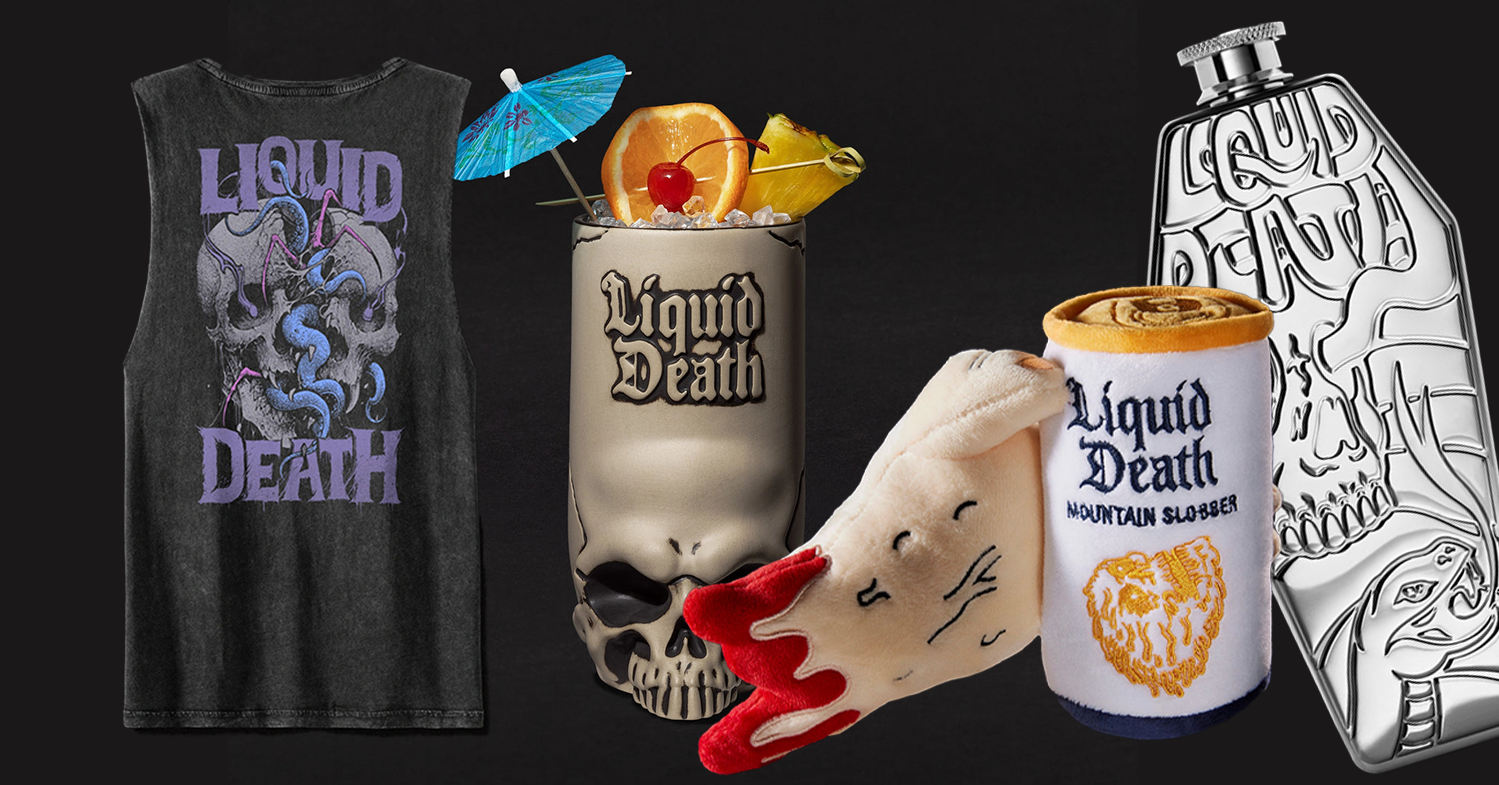
Liquid Death
Liquid Death has cultivated a cult following with its edgy branding and unique merchandise, offering products like T-shirts and hats that align perfectly with its irreverent image. Embracing the theme of death, their lineup includes coffin flasks, skull mugs, and even a “death grip” dog toy, turning a simple canned water product into a dynamic lifestyle brand where every product is so well thought out and originally designed. This creative approach has attracted a passionate community of fans who appreciate the brand’s playful and bold aesthetic. Liquid Death’s product selection and design choices clearly show they are having a lot of fun, making their merchandise as much a part of the brand experience as the water itself.
2) Integrating Merchandise with Other Forms of Marketing Media
In an era where brands must capture attention across multiple platforms, combining merchandise with other forms of media has emerged as a powerful strategy for creating memorable marketing moments. By integrating premium branded products into various media channels, brands can amplify their message and engage consumers in unique ways. Examples like the iconic New Yorker tote offered as a subscription incentive seamlessly blend print media with tangible rewards, while collaborations like Malbon’s partnerships with Evian and Curb Your Enthusiasm demonstrate how retail brands can leverage popular culture to enhance their appeal. Dunkin’ has also mastered this approach by using their Dunkin’ tracksuits to win over audiences during the Super Bowl, showcasing the effectiveness of merging merchandise with high-impact advertising. These strategies not only boost brand visibility but also foster deeper connections with audiences, turning media moments into lifestyle choices.
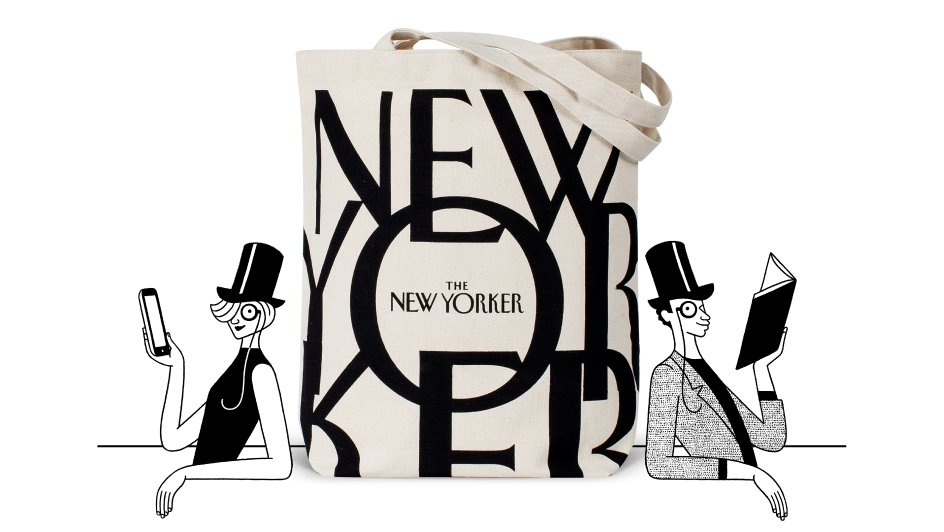
The New Yorker Tote
The New Yorker has seamlessly integrated merchandise with its subscription model by offering a stylish tote bag as a subscriber perk. This not only incentivizes subscriptions but also turns readers into walking advertisements, showcasing their affiliation with the iconic magazine.
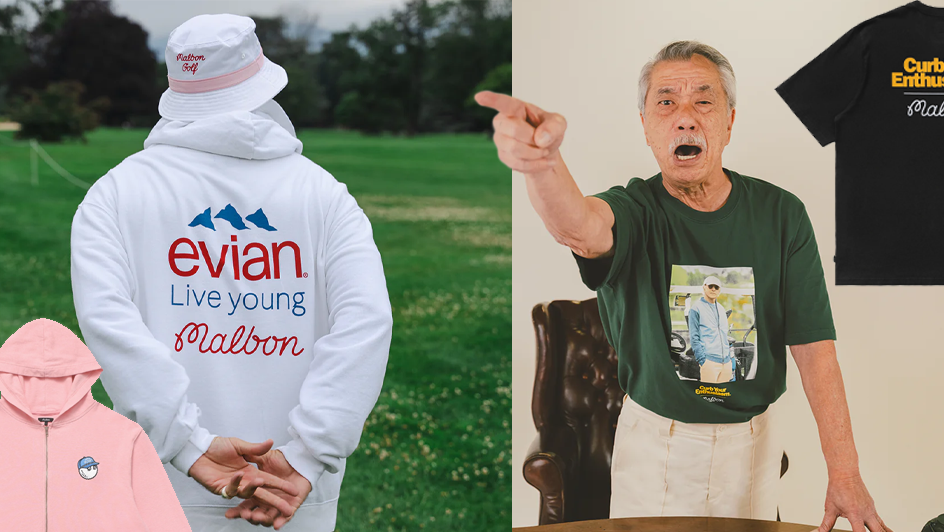
Malbon Collections
An up-and-coming lifestyle brand in the golf industry, Malbon, has emerged as a major player by experiencing tremendous success through collaborations with popular brands and designers. These partnerships have led to the creation of exclusive, limited-edition collections that generate buzz and capture attention for the trendy, golf enthusiast and pop culture fan.
Malbon’s impressive roster of collaborations includes names like Nike, TAG Heuer, Curb Your Enthusiasm, Coca-Cola, Evian, Jimmy Choo, and Formula 1, to name a few. These partnerships elevate the perception of both brands, attracting a broader audience and creating desirability for these exclusive items. The buzz surrounding these collections illustrates how strategically crafted branded merchandise can significantly enhance a brand’s image and perception.
Learn more about Malbons formula: The Rise and Success of Malbon Golf
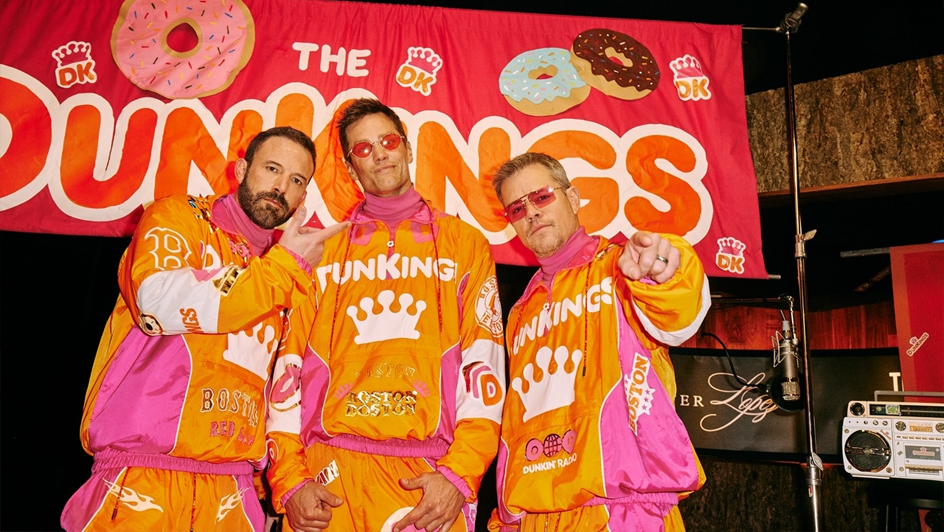
Super Bowl Ad Example: Dunkin’ Dun:
Dunkin arguably won the best Super Bowl commercial this year when they masterfully integrated merchandise and celebrity endorsements to sell out the limited edition DunKings track jacket and track pant within 19 minutes of the Shop Dunkin site which launched the Monday following the big game TMZ reports.
3) partnering with a celebrity
Partnering with celebrities can create viral moments that have a remarkable impact on sales and brand visibility. As we saw with Matt Damon, Tom Brady, and Ben Affleck for Dunkin’, celebrity endorsements can generate buzz that reverberates across social media and beyond. This strategy is also evident with Kylie Cosmetics, where celebrity influence drives consumer demand. I think it’s safe to say we’ve also all noticed all the celebrity spirits brands over hte last decade and celebrity clothing lines like Drew, showcasing the power of their personal brands. If your brand can capture a viral moment through celebrity partnerships, you’re sure to make a splash and engage audiences in meaningful ways.
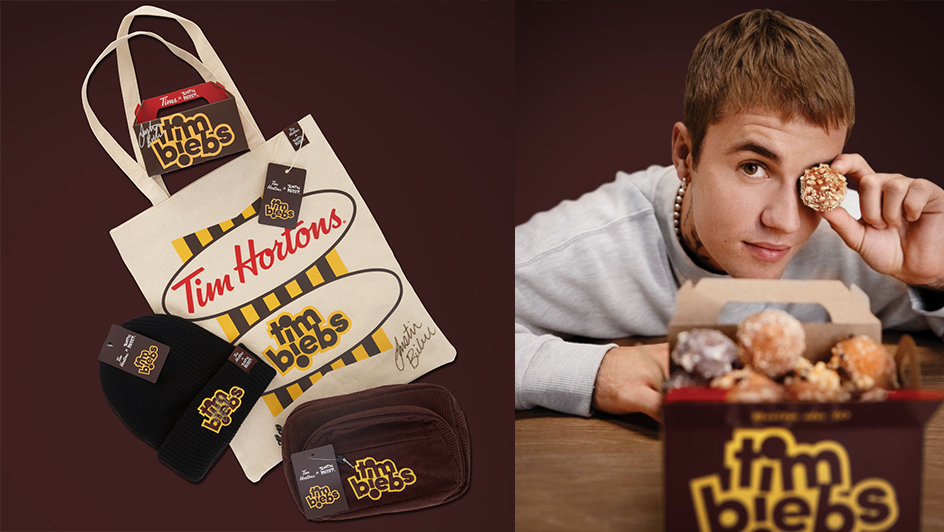
Justin Bieber + Tim Hortons
Some say Justin Bieber almost single-handely turned around Tim Hortons. Sales reported 10.3% higher after Tim Howards collaborated with the largest pop-star in the wrold to create a limited-time donut hole line, called “Timbiebs Timbits”. Along wih these tasty sugary bites, the collaboration extended to trend worthy merchandise that generated lots of buzz! While the line has sold out from the Tim Shop, you can find the coveted Justin Bieber line on sale at Wal-Mart.
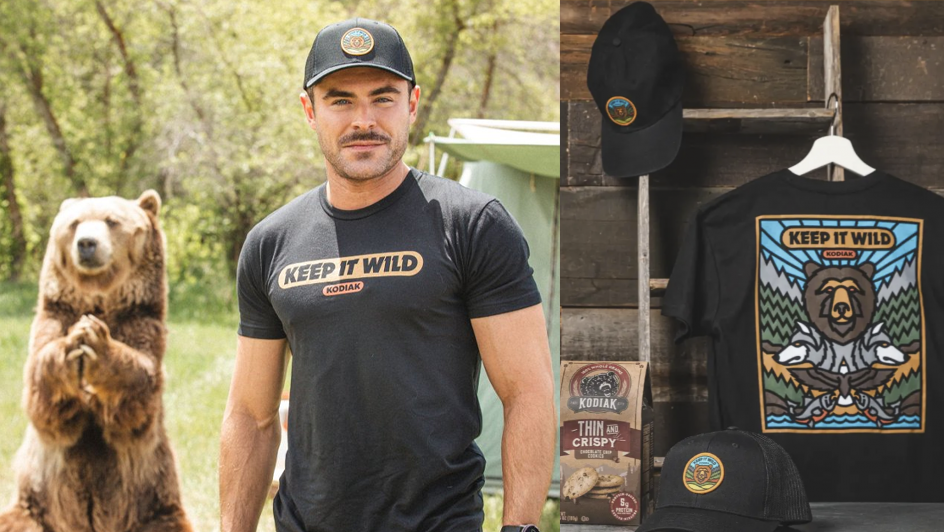
Kodiak & Zac Efron
Kodiak partnered with Zac Efron to release their Keep it Wild cakes which also launched with a limited edition line of outdoor gear that aims to raise awareness for grizzly bear conservation, with a portion of proceeds supporting wildlife preservation. Efron’s platform amplifies this message, showcasing how celebrity endorsements can drive both merchandise sales and positive change.
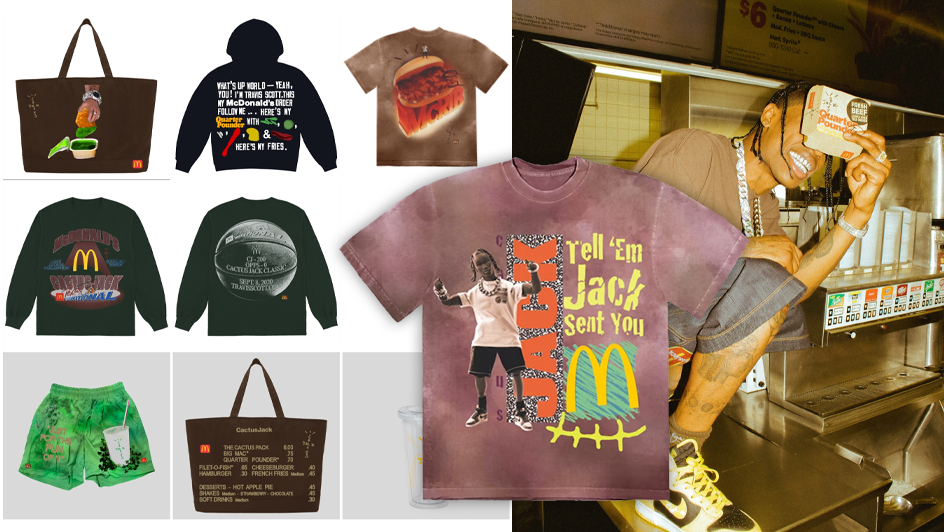
Travis Scott & McDonald’s
Travis Scott’s collaboration with McDonald’s was highly anticipated and involved a limited-time meal deal and exclusive merchandise. The partnership created a cultural moment, with fans eager to collect the merchandise and brands eager to replicate how what may seem like unlikely collaborators can help expand both parties’ reach.
4) Create an unmatched retail experience
Pleasing Austin Pop-Up: An Immersive Experience
Harry Styles’ pop-up shop for Pleasing wasn’t just about selling merchandise; it was about crafting an unforgettable experience that resonated with fans and shoppers. The pop-up created a vibrant and interactive environment that reflected the brand’s aesthetic and values, offering visitors a chance to explore and interact with the products in a setting that felt personal and unique.
By hosting the event in a limited location and timeframe, Pleasing created a sense of urgency and exclusivity, encouraging fans to share their experiences on social media and amplifying the brand’s reach and impact. The pop-up served as a gathering place for fans, fostering a sense of belonging and community, which strengthened brand loyalty and expanded the audience.
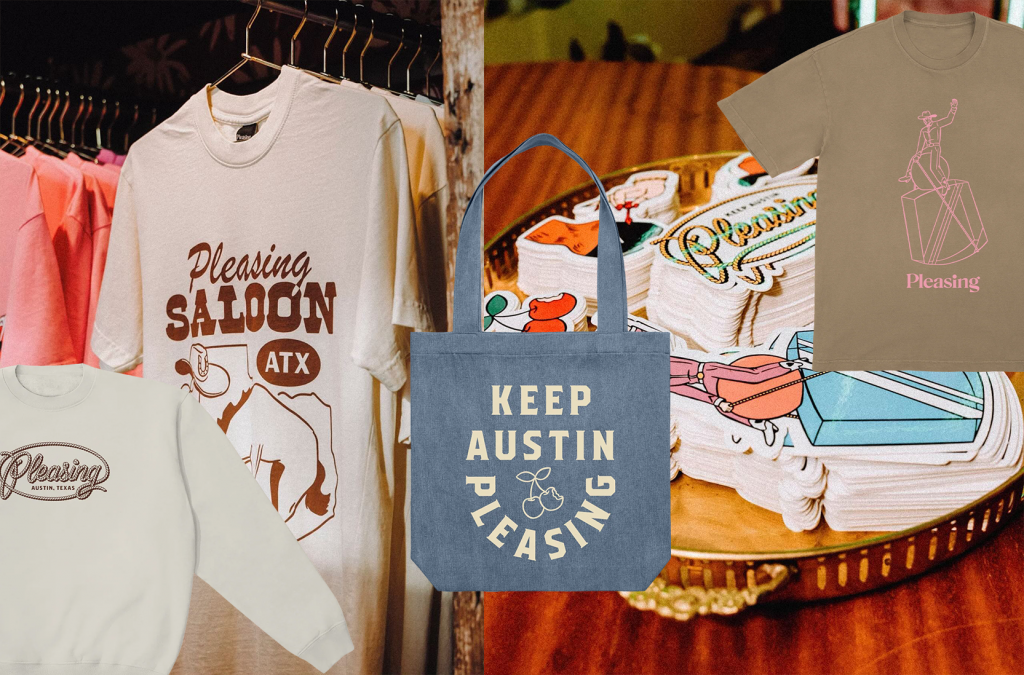
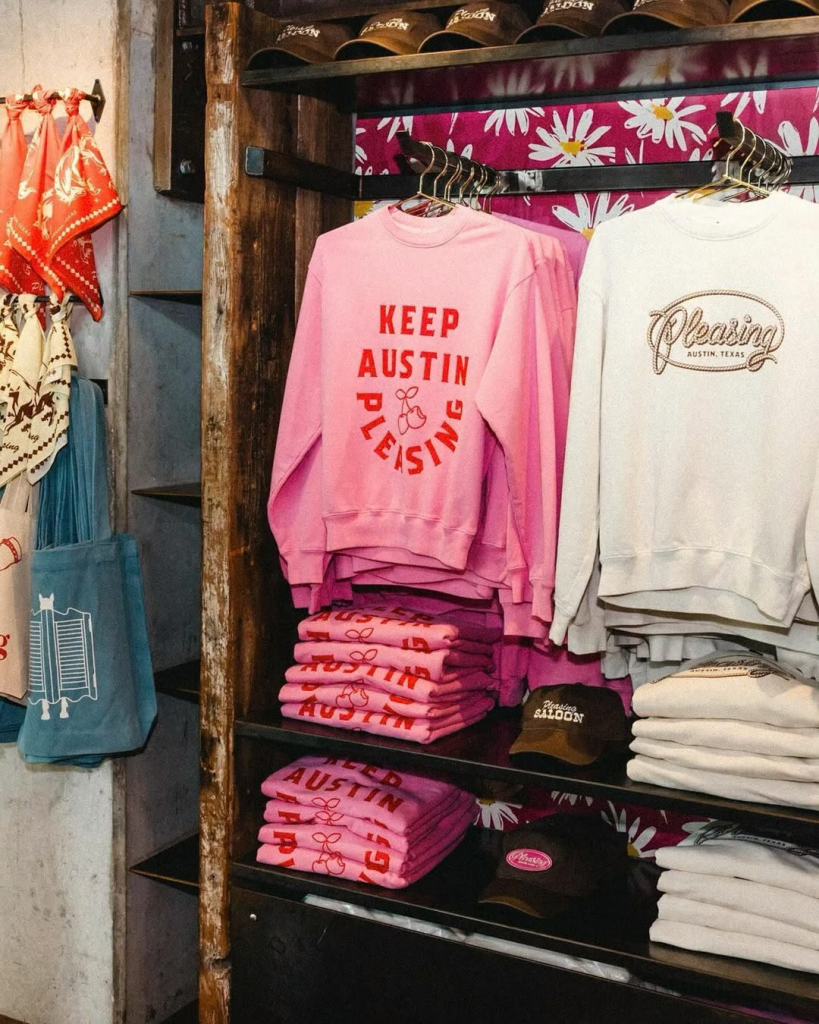
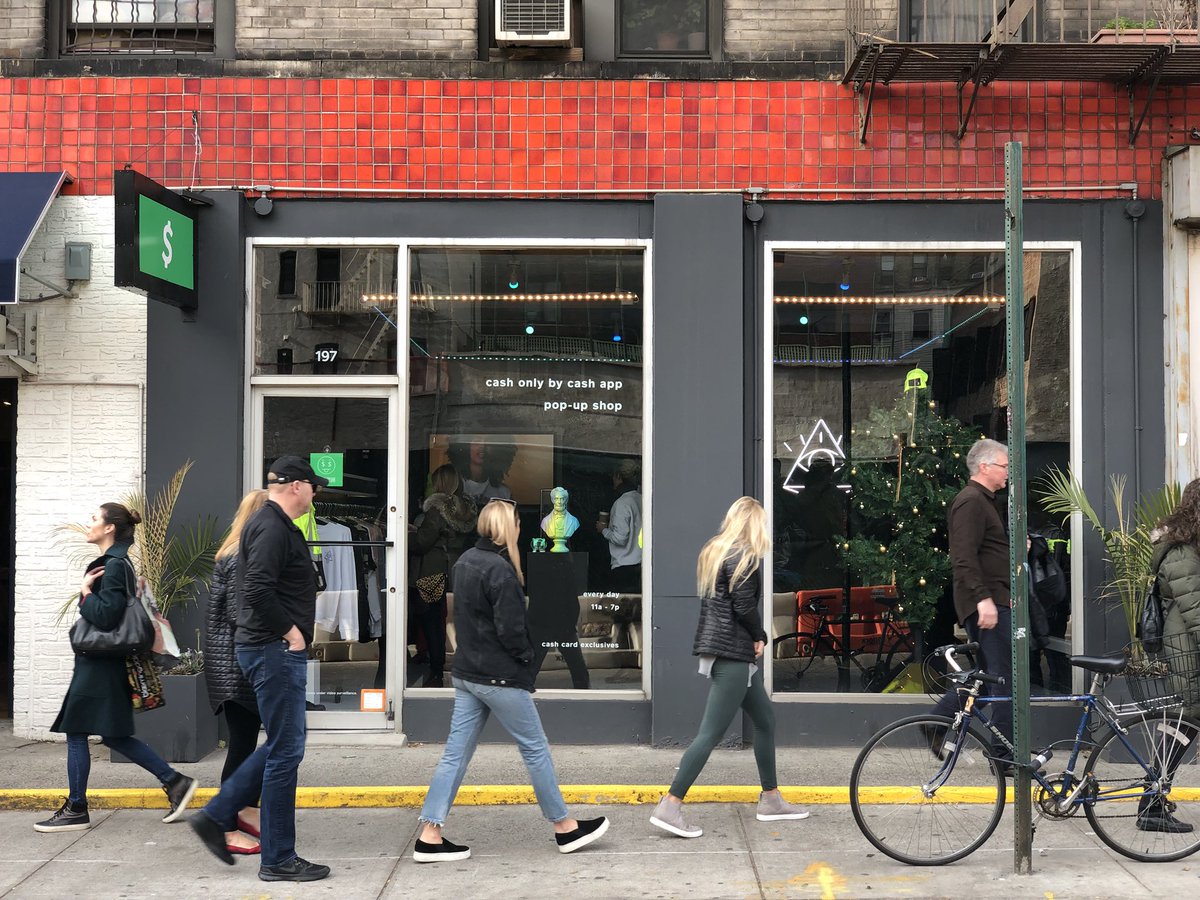
CashApp Pop-Up
CashApp, a mobile payment service, has effectively used pop-up shops to promote bold and eye catching merchandise, often in collaboration with other designers, brands or artists
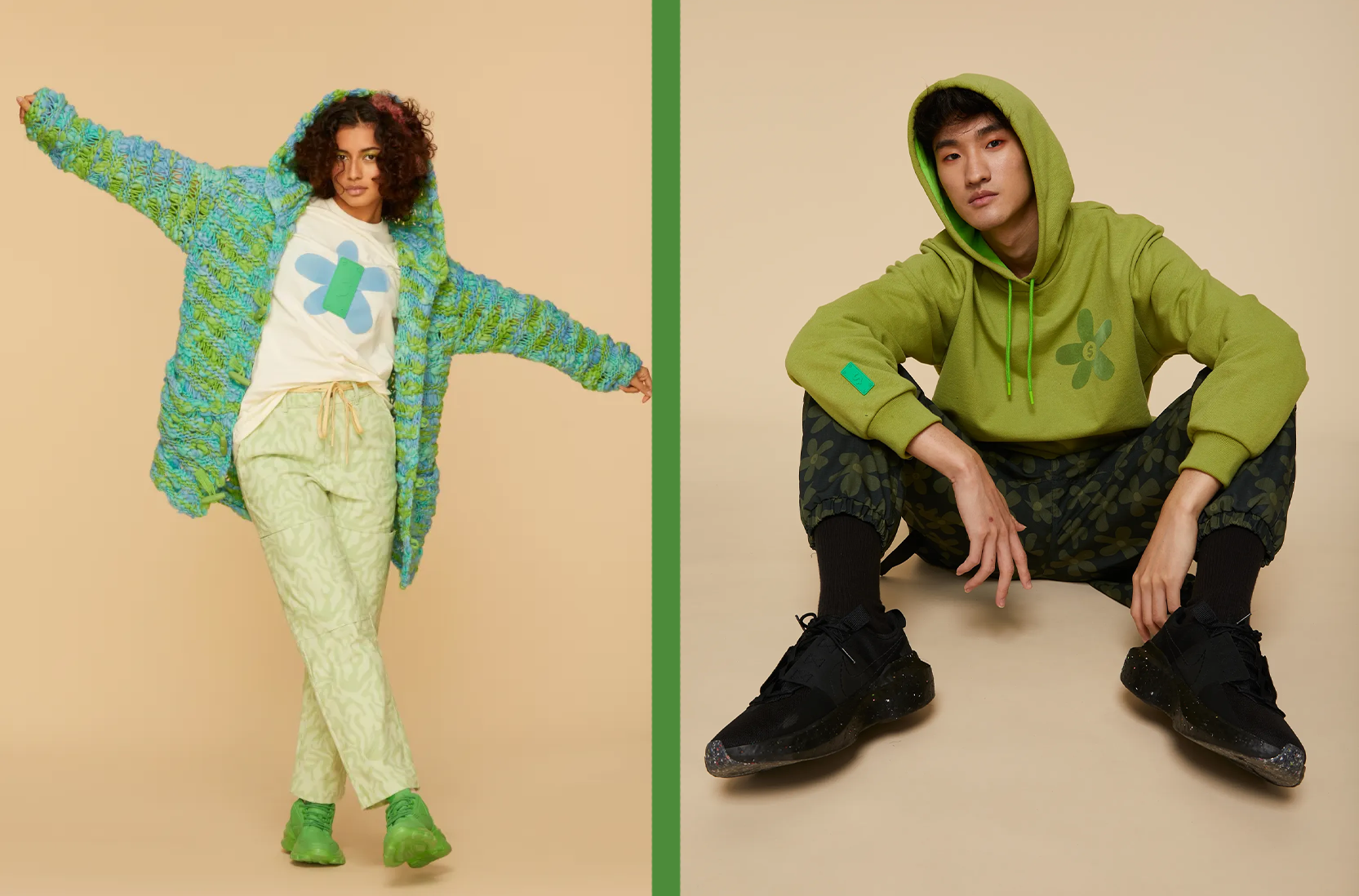
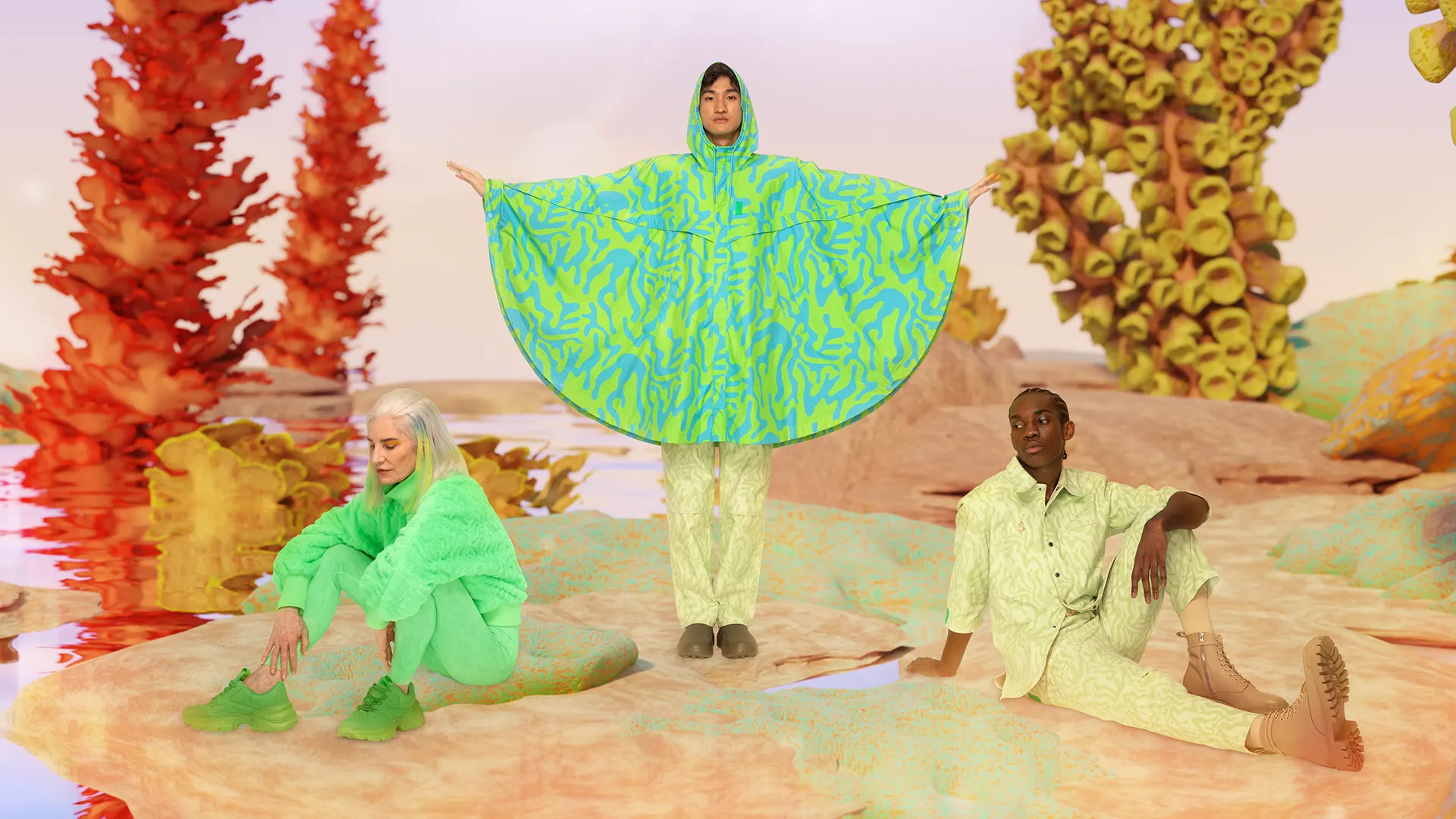
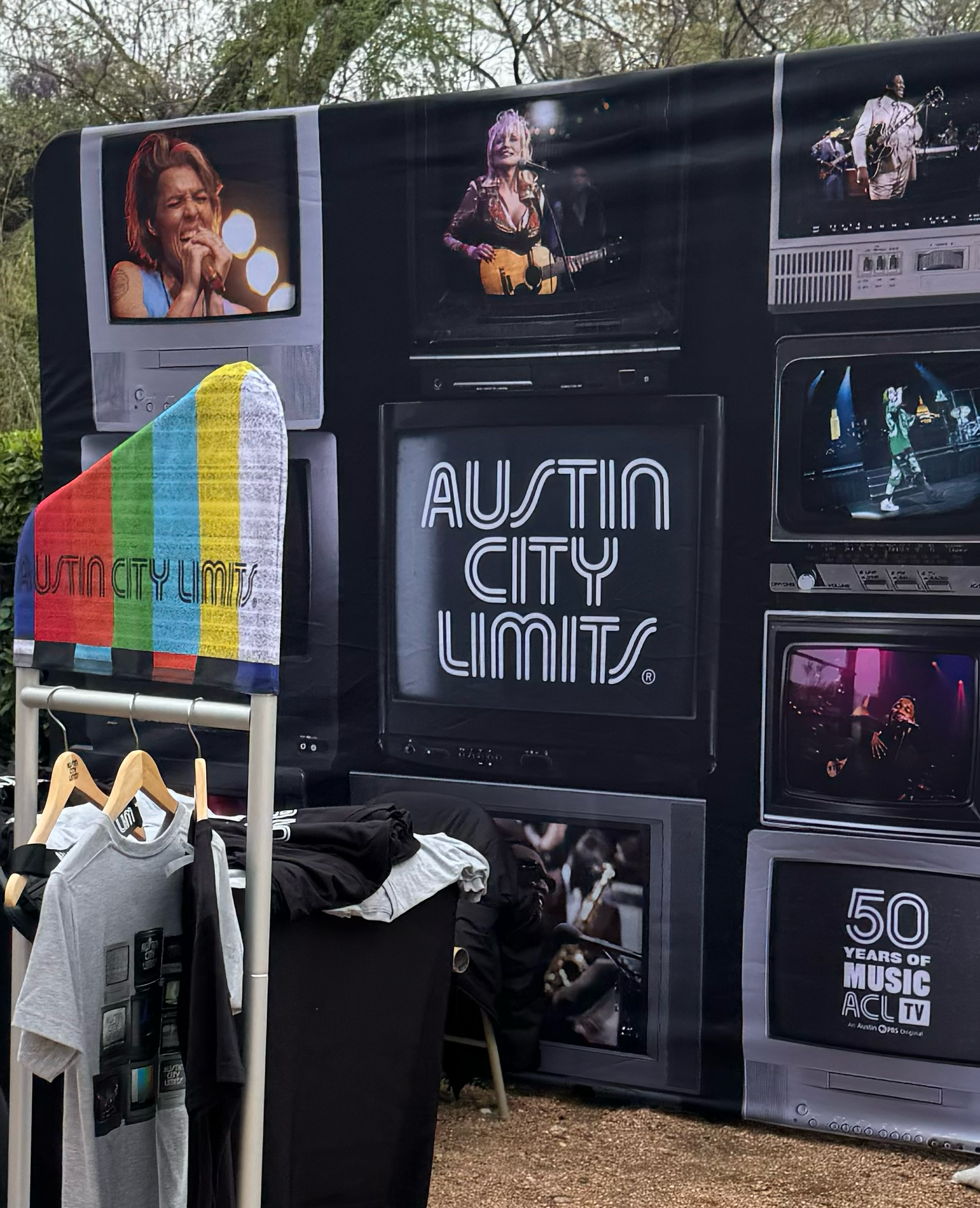
Austin City Limits:
Merchandise at events like Austin City Limits capitalizes on the festival experience, offering exclusive items that become souvenirs for attendees, enhancing their connection to the event and brand.
6) Create something unexpected to help your brand stand out

Tesla Tequila
Tesla surprised fans by launching its own branded tequila, combining luxury with novelty. This unexpected move captured media attention and consumer curiosity, turning the merchandise into a conversation piece that created a ton of internet buzz. Marketing experts like Gary Vaynerchuk praised Tesla for this innovation.
In his LinkedIn post, Gary stated, “Tesla’s entry into the tequila market is a brilliant example of how brands can leverage their existing reputation to explore new product categories. It’s not just about selling a new product; it’s about creating an experience and extending the brand’s narrative.” He encourages other CEOs to consider expanding into different product categories, emphasizing that “diversification can drive brand loyalty and open up new revenue streams.”
Chipotle’s Napkin Holder
Or consider creating something equally practical and buzzworthy, like Chipotle’s innovative Napkin Holder for your car. We’ve already highlighted Chipotle’s sustainable and trendy merchandise, but this practical and unexpected product addresses a common consumer need.
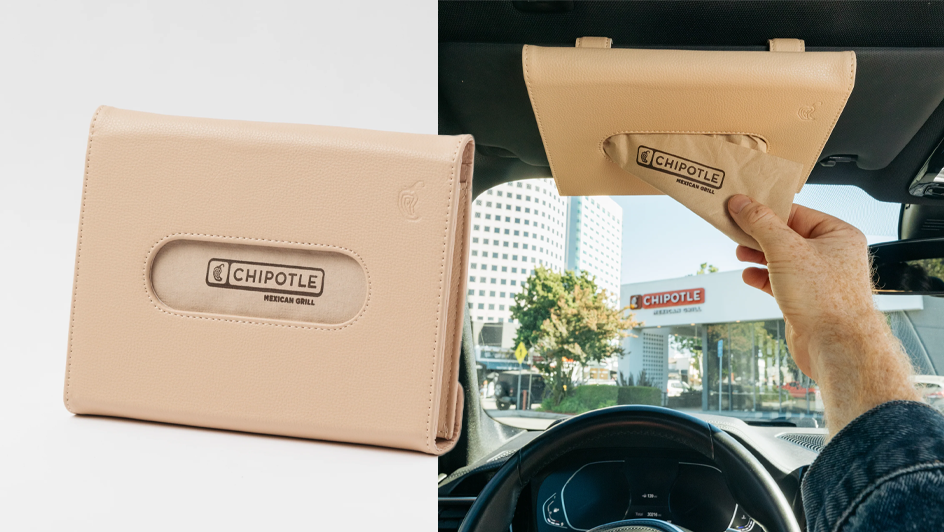
Recognizing that many people eat in their cars and often store extra napkins in the glove box, Chipotle designed a solution that fits seamlessly into customers’ lifestyles. This unique brand expression not only solves everyday problems but also resonated deeply with Chipotle’s audience, garnering significant attention on social media and online. The napkin holder became a viral sensation, sparking conversations and highlighting Chipotle’s ability to connect with its customers in meaningful and innovative ways.
7) Play on pop culture
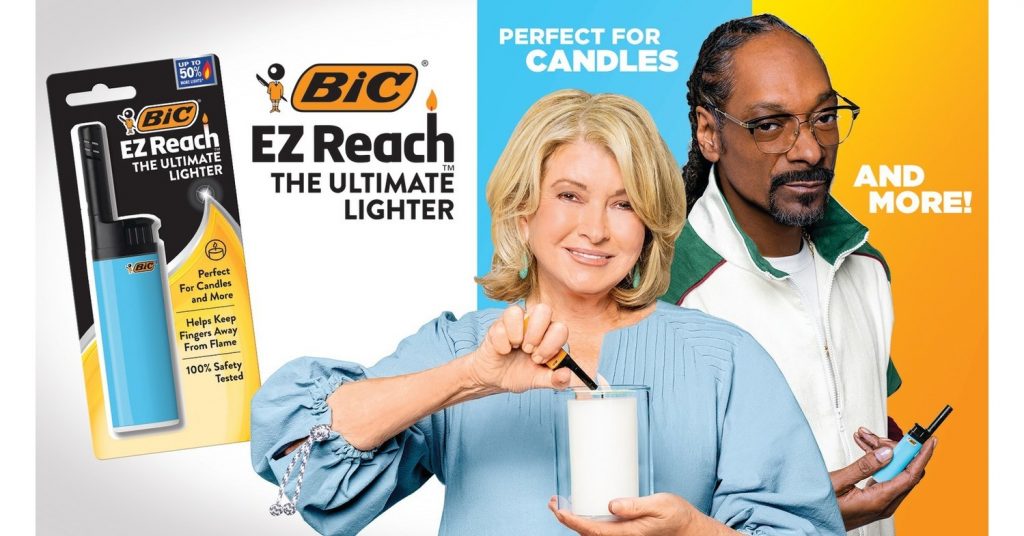
Snoop + Martha Bic Lighter
This collaboration leveraged the cultural phenomenon of Snoop Dogg and Martha Stewart’s unlikely friendship, resulting in an ad campaign and lighter designs that resonated with fans of both personalities, as well as those who appreciate cheeky branding. The playful nod to pop culture generated significant buzz and created a demand for an everyday product. By tapping into the unexpected dynamic between Snoop and Martha, the campaign captured public imagination, demonstrating the power of combining humor, star power, and cultural references. The key takeaway is that blending unexpected elements can create a viral moment, engaging audiences and driving interest through clever and relatable branding.
8) Create Retail Partnerships that draw in more consumers to your brand
Partnerships between brands and major retailers are becoming increasingly popular and can serve as powerful catalysts for viral moments and amplified marketing efforts. These collaborations enable brands to reach broader audiences, leverage shared marketing resources, and create exclusive offerings that capture consumer interest. Let’s explore how Liquid Death and Formula 1 have harnessed the power of retail partnerships to enhance their brand presence and engage new customers.
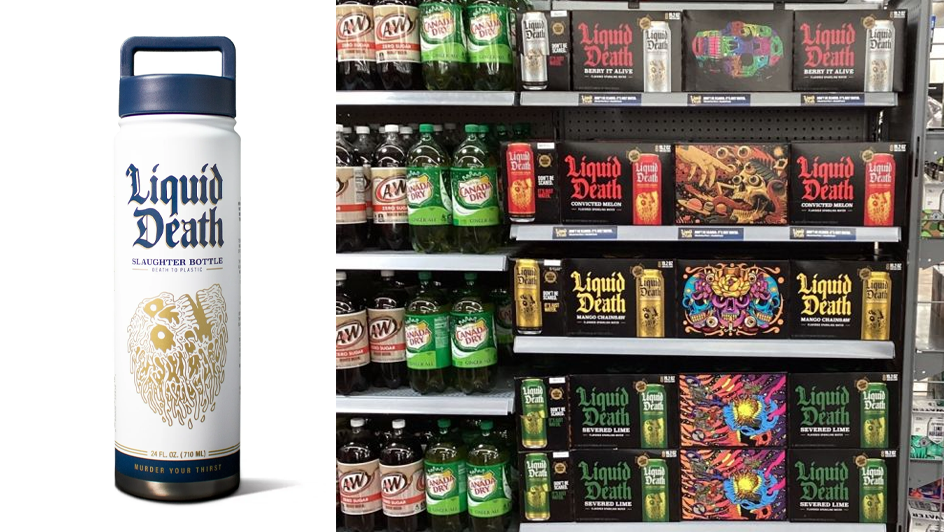
Liquid Death, partnered with Walmart to expand its market reach and tap into the retailer’s vast customer base. By placing Yeti Style Tumblers on Walmart’s shelves, Liquid Death is able to increase accessibility and visibility, reaching consumers who might not encounter the brand through traditional distribution channels, like their web presence.
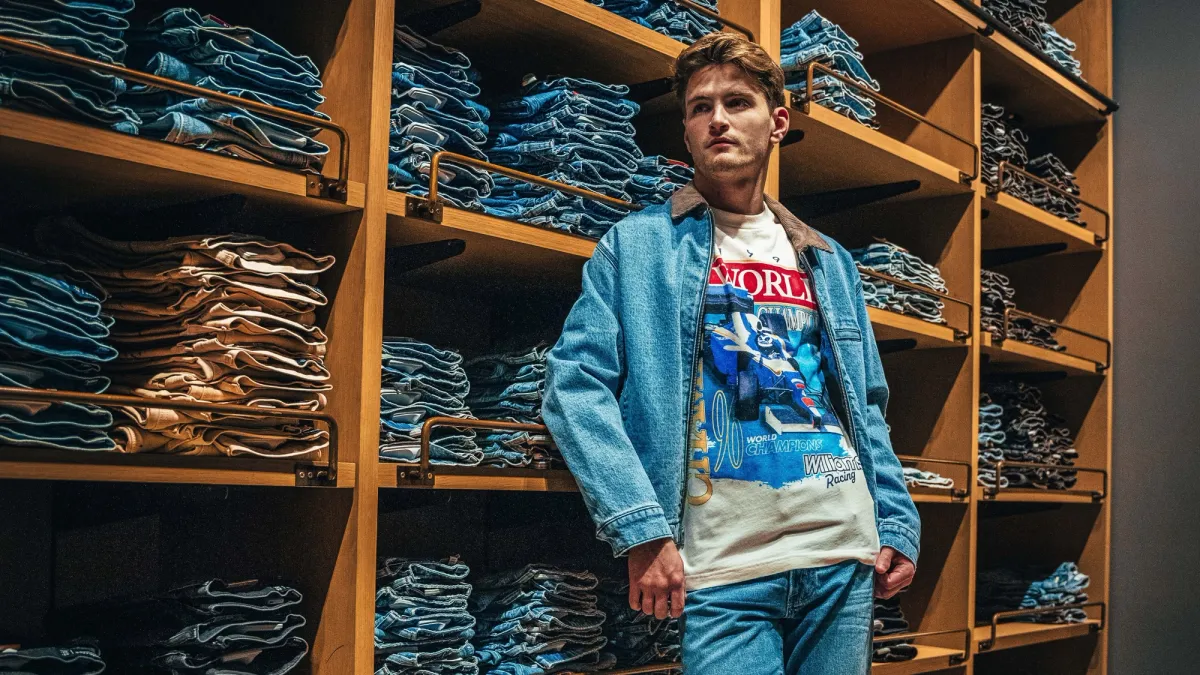
The Formula 1 x Hollister collaboration fuses the worlds of sport and fashion, creating merchandise that appeals to both motorsport enthusiasts and fashion-forward teens. By partnering with a brand like Hollister, Formula 1 can engage a demographic that is highly active on social media, fostering viral moments through user-generated content, influencer promotions, and strategic marketing campaigns. This synergy allows both brands to expand their reach and engage with a younger audience that values both style and sport.
9) Drive Social Impact Through Merchandise
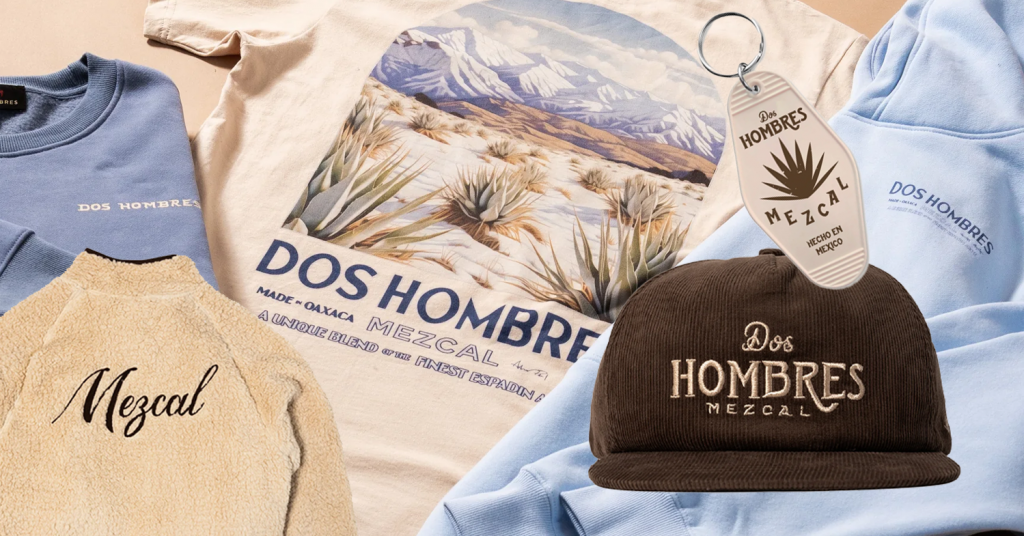
Dos Hombres, the mezcal tequila brand founded by “Breaking Bad” stars Bryan Cranston and Aaron Paul, has leveraged its merchandise to drive social impact, proudly donating profits from their apparel to go back to the village of San Luis del Rio, where the best agaves in the world are cultivated and harvested. Their efforts are improving infrastructure in the region and are providing support for the community
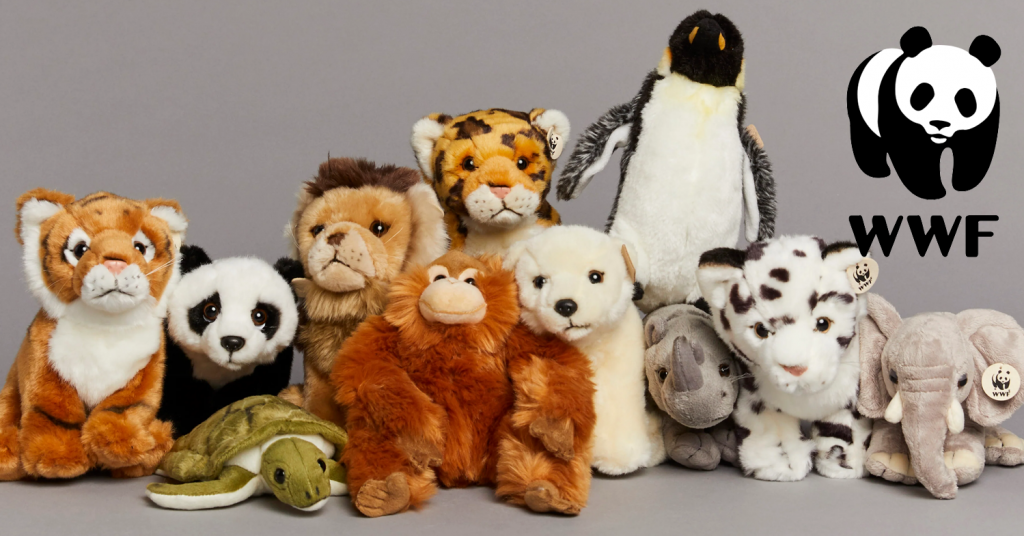
The World Wildlife Fund uses merchandise like plush toys to raise awareness and funds for conservation efforts, turning consumer purchases into impactful contributions to a cause. The Plush toys serve as collectors items and conversation starters, raising awareness about endangered species and the importance of conservation efforts
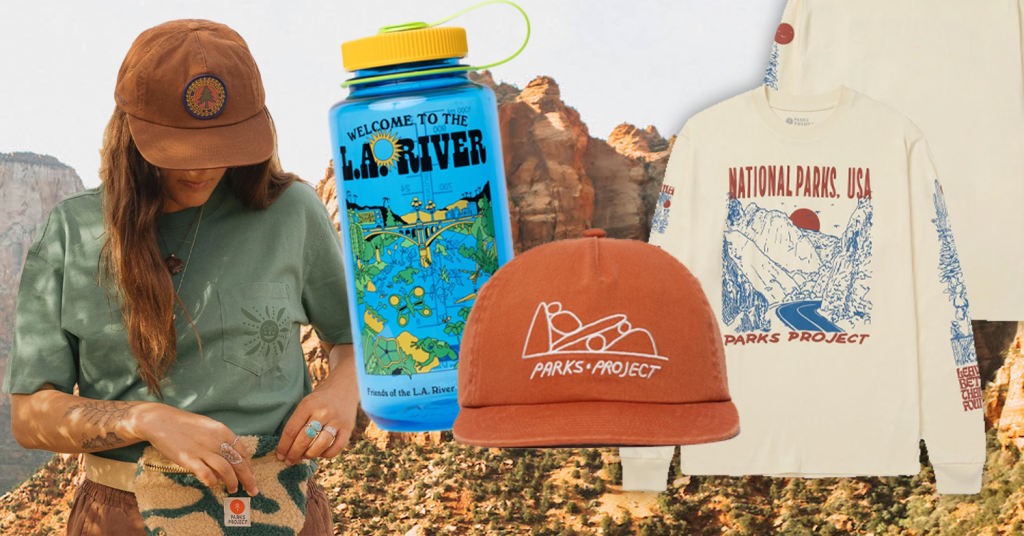
The Parks Project is a unique initiative that leverages merchandise to drive social impact, focusing on conversation and preservation of national parks. The Parks Project collaborates with nonprofit organizations, such as the National Park Foundation and National Geographic Society, to identify and support projects that address the most pressing needs of national parks across the United States.
10) Harness the Power of TikTok
Instagrammable merch is also a key marketing play in the tech world, as evidenced by the app Wave (a sleep experience company that brings live streaming sleep guidance to your bedside every night). Cofounders Mason Levey and Brad Warsh integrated branded merch in its launch and gifting strategy to press and influencers.
@trailernick the hat gets me every time #farmtok #agtok #agriculture #farmer #farming #farmequipment #wilson #farmhat ♬ Irresistible rizz - North Valley Group
As Warsh explains: “Branded merch is an extension of the lifestyle your product caters to. And branded merch done right can certainly elevate your brand with your targeted audience and create the perception you want for it — take the Erehwon hoodie, for example. Oftentimes I think it’s easier to do that through merch than through product, because merch is an actual visual representation of the audience you want to speak to. You design your merch for the person you see using your product — and photograph it on them as well.
@kellyrosesarno Replying to @chelsey.drake this Wakanda Forever collection by @maccosmetics is fire! #wakandaforever ♬ original sound - Kelly Rose Sarno
In the age of social media, influencer marketing has become a key strategy for brands aiming to expand their reach and create buzz around their products. Influencer mailers, curated packages sent to influencers, are a powerful tool in this strategy. These mailers can generate lots of views, create viral moments and elevate brand status.
These examples illustrate how thoughtful merchandise strategies can elevate brand presence, create viral moments, and foster meaningful connections with audiences. By aligning merchandise with themes like pop culture, retail experiences, and social impact, brands can turn everyday products into powerful marketing tools that captivate and engage consumers. At Whitestone, our vast experience and contemporary approach to on-trend sourcing and design uniquely position us to help your brand achieve these viral moments. We’re ready to collaborate with you to transform your brand identity into must-have merchandise that resonates with your audience and amplifies your brand’s impact. Let’s work together to craft merchandise that not only stands out but also elevates your brand to new heights.








